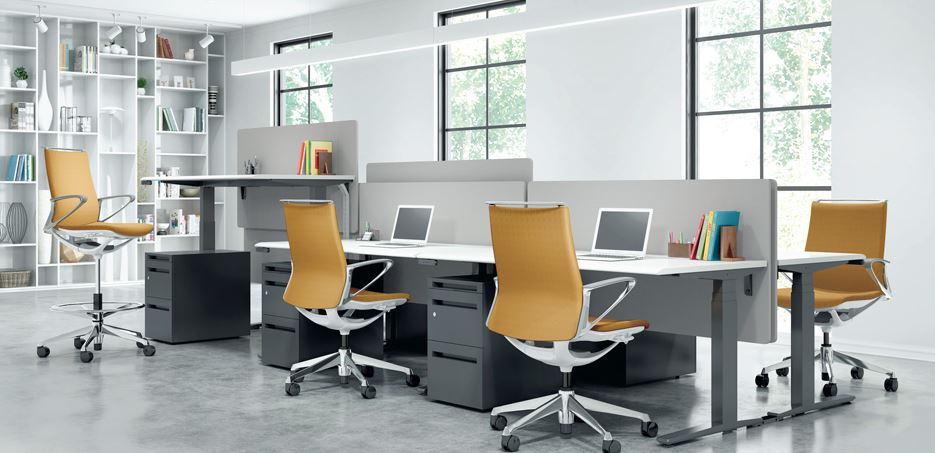Introduction
The modern workplace is evolving rapidly, and so are the expectations and needs of employees. As organizations strive to create productive and inspiring environments, office furniture plays a vital role in shaping the overall atmosphere. Rather than discarding old furniture and investing in new pieces, many businesses are now opting for office furniture renovation.
This blog by an office chair dealer in Gurgaon is exploring everything for functional, aesthetically pleasing, and sustainable areas.
Tips
By following these tips, you can successfully undertake office furniture renovation, creating an improved workspace that is visually appealing, functional, and conducive to productivity and employee well-being.
Assess and Prioritize:
Begin by assessing the condition of your existing furniture. Identify which pieces require immediate attention and prioritize based on their functionality and visual impact. This will help you allocate your resources effectively and focus on the areas that need the most attention.
Set a Budget:
Determine a budget for your furniture renovation project. Consider factors such as the extent of renovation required, the number of furniture pieces to be renovated, and any additional costs for materials or professional services. Having a budget in place will guide your decision-making process and ensure that you stay within your financial limits.
Research and Inspiration:
Take the time to research different design styles, trends, and materials that resonate with your organization’s aesthetic and functional goals. Browse through interior design magazines, websites, and social media platforms to gather inspiration. This research will help you generate ideas for your furniture renovation project and ensure that the final outcome reflects your desired vision.
Seek Professional Assistance:
Depending on the complexity of the renovation project, consider hiring professional furniture renovators or interior designers. They have the expertise and experience to guide you through the process, provide valuable insights, and ensure that the renovation is carried out efficiently and effectively. They can also help with material selection, colour schemes, and space planning to optimize the functionality and visual appeal of the furniture.
Repairs and Refurbishment office furniture:
Address any structural issues or damages in your existing furniture before proceeding with cosmetic enhancements. Replace broken or damaged parts, tighten loose screws, and fix any wobbly or unstable components. Refurbish surfaces by sanding, varnishing, or repainting to restore the furniture’s original quality. This step ensures that the furniture is structurally sound and prolongs its lifespan.
Material and Upholstery Selection:
Carefully choose materials and upholstery that align with your desired aesthetic, functionality, and durability. Opt for high-quality fabrics that are stain-resistant and easy to clean, especially for seating furniture. Consider materials with sustainable certifications or recycled content to promote eco-friendliness. The selection of materials and upholstery should be in line with your organization’s branding and employee comfort requirements.
Ergonomics and Comfort:
Prioritize ergonomics and employee well-being when renovating office furniture. As per a sofa manufacturer in Gurgaon, choose chairs and desks with adjustable features that promote proper posture and support. Consider ergonomic accessories such as keyboard trays, monitor stands, and footrests to enhance comfort and reduce the risk of musculoskeletal issues. Ergonomic furniture design will contribute to employee productivity and overall well-being.
Technology Integration:
Plan for the integration of technology within the renovated furniture. Consider the placement of power outlets, USB ports, and cable management systems to facilitate easy connectivity and device charging. Incorporate features that accommodate the use of computers, laptops, and other electronic devices seamlessly. This integration will enhance productivity and streamline workflows within the workspace.
Maintenance and Care:
After the furniture renovation is complete, establish a maintenance plan to ensure its longevity. Provide employees with guidelines on how to properly use and care for the renovated furniture. Regularly inspect and clean the furniture, and promptly address any repairs or issues that arise. Proper maintenance will extend the lifespan of the renovated furniture and preserve its visual appeal.
Employee Involvement and Feedback:
Engage employees throughout the renovation process by seeking their input and feedback. Consider their preferences, needs, and comfort levels when making design decisions. They involvement not only fosters a sense of ownership and engagement but also ensures that the renovated furniture meets their requirements and enhances their work experience.
Conclusion:
Office furniture renovation offers numerous advantages, ranging from cost savings and customization to sustainability and improved employee well-being. By investing in the renovation of existing furniture, businesses can create workspaces that are aesthetically pleasing, functional, and aligned with their specific needs. Furthermore, renovation promotes environmental responsibility by extending the furniture’s life.
